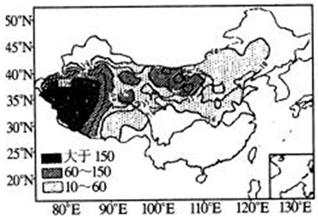You’re rushing to work and a man ahead of you collapses on the sidewalk. Do you stop to help? In a study of by-standers, it was found that some people avert their gaze and keep on walking rather than stop and get involved. “There is a tendency to decide that no action is needed.” says a psychologist. “The first thoughts that pop into your mind often keep you from offering help. In order to take action, you have to work against them.” Here are some common thoughts that might prevent you from helping. ● Why should I be the one? I’m probably not the most competent person in this crowd. You might think someone older or with more medical knowledge should offer assistance. ● What if he doesn’t really need my help? The fear of embarrassment is powerful; no one wants to risk looking foolish in front of others. ● No one else looks concerned- this must not be a problem. We can follow the people around us, but most people tend to hold back their emotions in public. “If you spot trouble and find yourself explaining inaction, force yourself to stop and evaluate the situation instead of walking on,” says the psychologist. “Then retry to involve other people; you don’t have to take on the entire responsibility of being helpful. Sometimes it’s just a matter of turning to the person next to you and saying, ‘It looks like we should do something.’ Or asking someone if an ambulance has been called and, if not, to call for one. Once you take action, most people will follow you.” 小题1:Which is NOT the common thought that stops you from helping others?
A.I’m not the very person capable of setting the problenu.
B.It looks like we should do something.
C.It must not be a problem as no one else is concerned.
D.He doesn’t really need my help.小题2:According to a study of by-standers, what will some people do when a man ahead falls down on the sidewalk?
A.They will call for help and then walk away.
B.They will stop and offer help.
C.They will turn away their eyes and go on walking.
D.They will laugh at him.小题3:We learn from the last paragraph that if we spot ttouble,
.
A.we sbould call the ambulance as soon as we can.
B.we should take on the whole responsibility and do something alone.
C.we should stop and evaluate the situation and try to make other people follow.
D.we should turn to other people and ask them to take on the responsibility小题4:In order to offer others your timely help, you need to
.
A.ask others for help and call the police
B.get along well with the passers-by who spot the trouble
C.go directly to the police station
D.work against the rirst thoughts that prevent you offering help小题5:The main purpose of the text is to tell readers
.
A.to give others a hand
B.to be more competent
C.not to risk looking foolish
D.to stop and evaluate the situation

树突状细胞是一种免疫细胞,广泛存在于皮肤等结构中。当病原体侵入人体时,它会及时“通知”T细胞等其他免疫细胞。科研人员已成功地用一个胚胎干细胞培育出了树突状细胞。下列有关说法正确的是
[ ]
A.用胚胎干细胞培育出树突状细胞,体现了细胞的全能性B.若培育出能识别癌细胞的树突状细胞,将可能用于治疗癌症C.树突状细胞与效应B细胞一样只参与细胞免疫而不参与体液免疫D.效应B细胞、T细胞、效应T细胞都能识别病原体
下列关于人体免疫反应中产生的记忆细胞的说法,正确的是
[ ]
A.特异性免疫和非特异性免疫中都可以产生记忆细胞B.当同一种抗原再次侵入机体时,记忆细胞的细胞周期明显缩短C.记忆细胞能识别抗原和抗体D.记忆细胞可分化成效应B细胞和T细胞
下列选项中可用下图准确表示的是

[ ]
A.1表示细胞外液,2~4分别表示血液、组织液、淋巴B.1表示原核生物,2~4分别表示细菌、蓝藻、病毒C.1表示免疫系统,2~4分别表示免疫器官、免疫细胞、抗体D.1表示真核细胞的生物膜系统,2~4分别表示细胞膜、细胞器膜、细胞核膜
读“中国年平均沙尘天气日数分布图”,分析回答: (1)从上图中可以看出,沙尘天气主要发生在我国___\_地区(1分);其中集中分布于_______(在以下选项中选择字母)(2分)。
(1)从上图中可以看出,沙尘天气主要发生在我国___\_地区(1分);其中集中分布于_______(在以下选项中选择字母)(2分)。
A.东北平原
B.塔里木盆地
C.内蒙古高原西部
D.黄土高原(2)上图中,自东向西,降水量变化规律是___\__。植被变化规律是_______。(4分)
(3)西北地区荒漠化的主要人为因素是__\_,____\_,________。(3分)
下面是人工免疫治疗H1N1流感的实验,请完善实验步骤并预期结果:
实验原理:注射外源抗体可治疗H1N1流感。
实验目的:验证康复者血清能治疗H1N1流感。
实验材料:健康小白鼠、H1N1病毒液、未患过H1N1流感的小白鼠血清(A)、患H1N1流感后康复的小白鼠血清(B)等。
实验步骤:
(1)取年龄、体重、性别、身体状况相同的若干健康小白鼠,平均分为两组,标记为甲、乙。
(2)________________。
(3)________________。
(4)________________。
(5)预期结果:______________。
